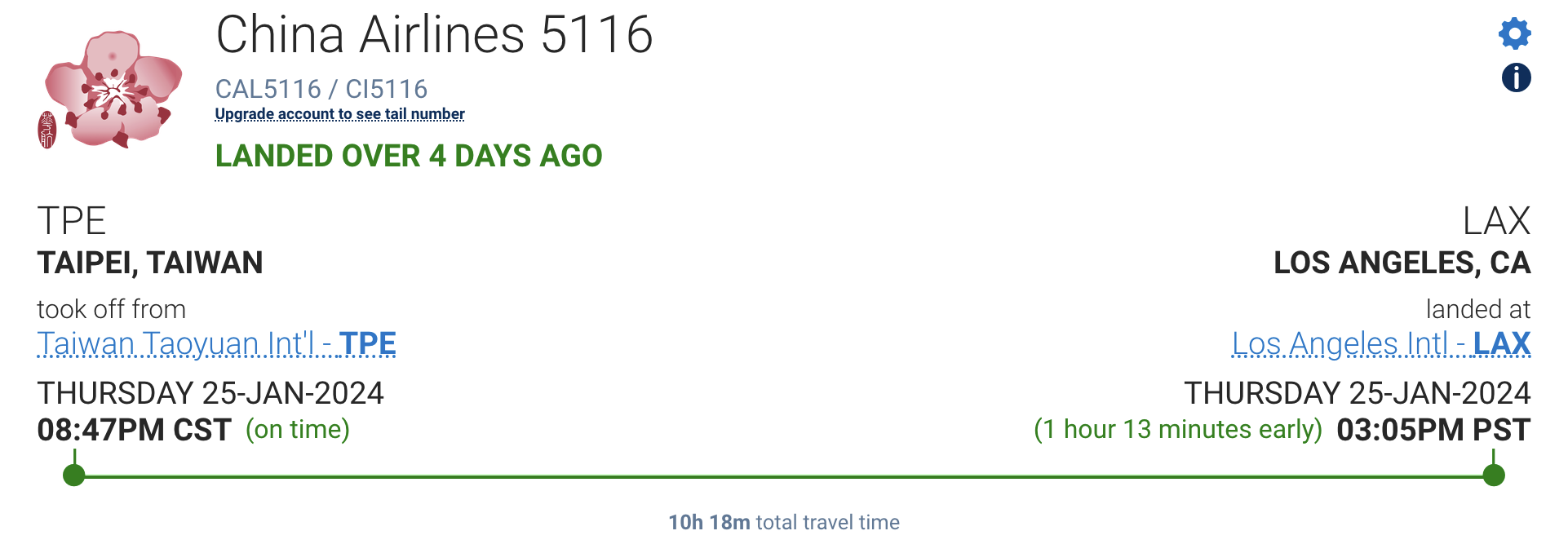There’s a new unofficial record for the fastest speed ever achieved for a non-supersonic commercial aircraft. Now, this isn’t some hot-rod plane with special modifications or a planned attempt to break the record. Instead, it was during a scheduled flight by China Airlines from Taiwan to Los Angeles. The flight was measured to be traveling at 826 MPH, and it happened somewhere over the Pacific Ocean between Japan and Hawaii.
How does an aircraft with a cruising speed of 564 MPH travel over 200 MPH faster than it should? A massive tailwind is how.

The El Niño weather pattern creates an unusual jetstream which is more like a straight line. This results in extremely high winds over the Pacific. China Airlines and many other airlines are taking advantage of this weather pattern to shave time off their Transpacific flights from Asia.

Normally, the flight route would follow the blue line, utilizing the Earth’s curvature to take the most direct route between the two destinations. However, it is currently faster to make use of the jet stream and fly almost directly across the ocean.
China Airlines flights for the past week have been arriving in Los Angeles over an hour early. And they’re not the only ones to change flight paths. Delta Air Lines is also flying in the jetstream during flights from Tokyo to Detroit, and during one flight last week, they reached 817 MPH.
Did The Planes Break The Sound Barrier?
Sound travels at 767 MPH, and all of these flights were going faster than that. So did they break the sound barrier and create a sonic boom? Despite their high speeds, the answer is no. According to the Washington Post,
Even though its ground speed was greater than the speed of sound, it was still moving through the surrounding air at its ordinary cruise speed. It just so happened that the surrounding air was also moving.
They used an analogy of walking on a moving sidewalk. You’re not walking any faster than usual. You’re just traveling faster because the walkway is also moving.
What Do Passengers Feel?
There’s no mention that passengers noticed anything different besides arriving earlier than planned. From personal experience, we were on an Icelandair flight that traveled at 673 MPH, thanks to a 100 MPH tailwind. On that flight, it didn’t feel any different than usual. The biggest issue was that we had to wait close to 1 hour for our driver to arrive to take us to our hotel. In other instances, arriving early might not mean you get off the plane any quicker because there might not be an available gate.
Final Thought
It’s impossible to know exactly when a strong jetstream will occur, so airlines have to deal with it just like they do with other weather conditions. Even though taking advantage of strong jetstreams can help planes travel more quickly between cities, airlines also have to be cautious of the strong winds when flying in the opposite direction. While it’s fun to measure the “fastest” flight, planes aren’t really traveling any faster than they used to. We’ll have to wait and see if commercial supersonic travel will ever come back into the picture.
Want to comment on this post? Great! Read this first to help ensure it gets approved.
Want to sponsor a post, write something for Your Mileage May Vary, or put ads on our site? Click here for more info.
Like this post? Please share it! We have plenty more just like it and would love it if you decided to hang around and sign up to get emailed notifications of when we post.
Whether you’ve read our articles before or this is the first time you’re stopping by, we’re really glad you’re here and hope you come back to visit again!
This post first appeared on Your Mileage May Vary

3 comments
…. and if you got some nice J calls seats you don’t get to enjoy them for nearly as long. I know that’s how I felt when I got to fly F on Lufthansa and got in early.
So how does this impact flights to Asia? I assume they still follow a polar route and aren’t going directly against the jet stream but still may slow them down somewhat.
Yes. They are avoiding the jetstream by flying the polar route.